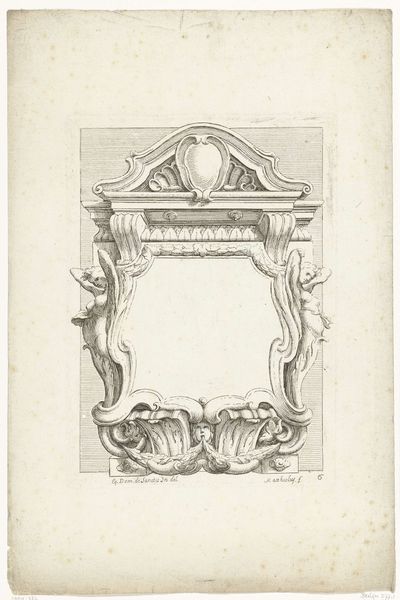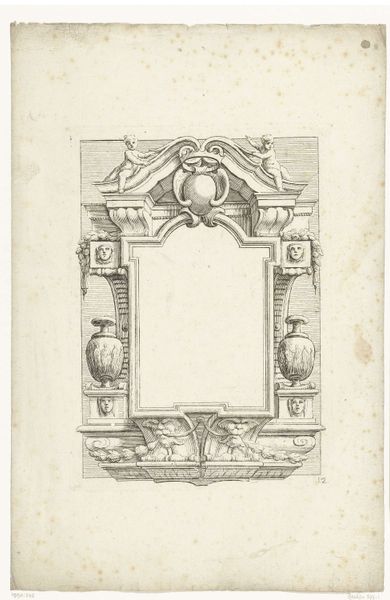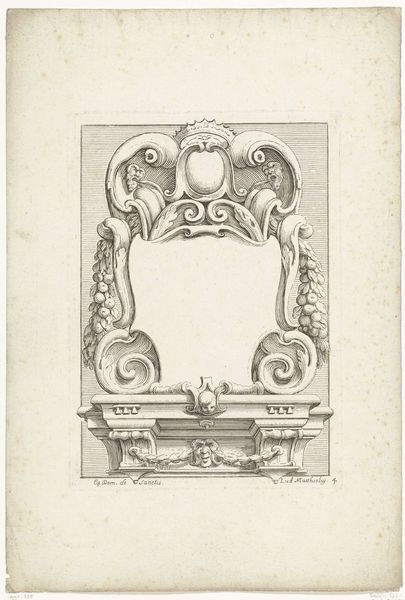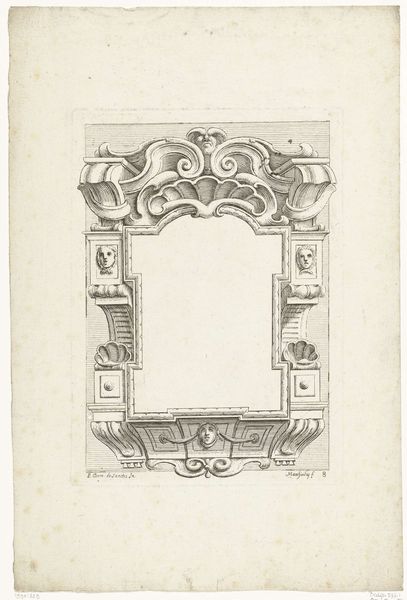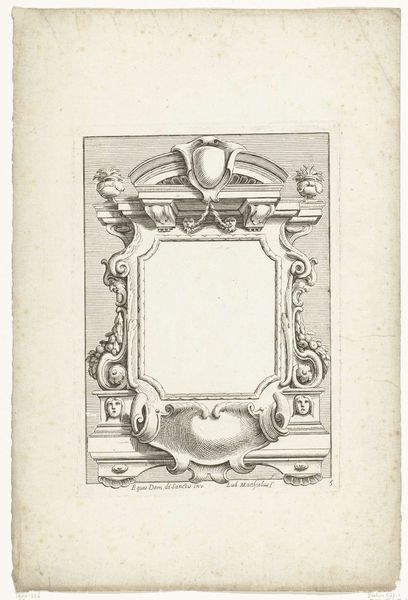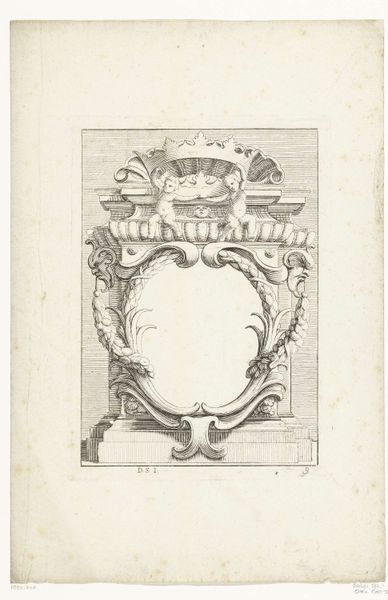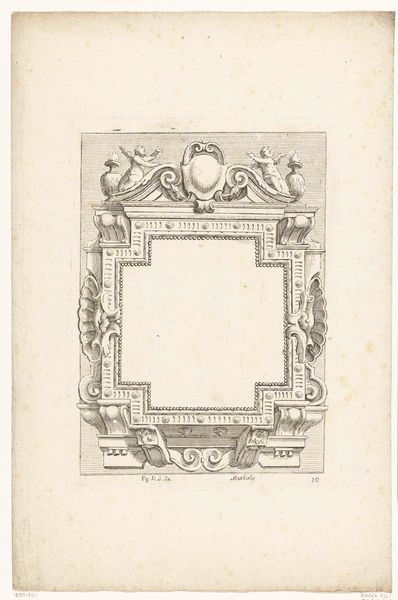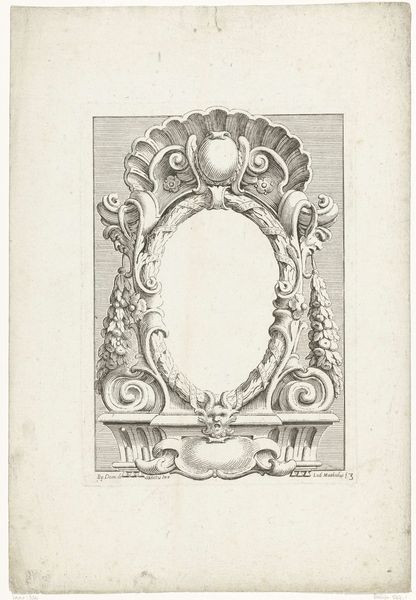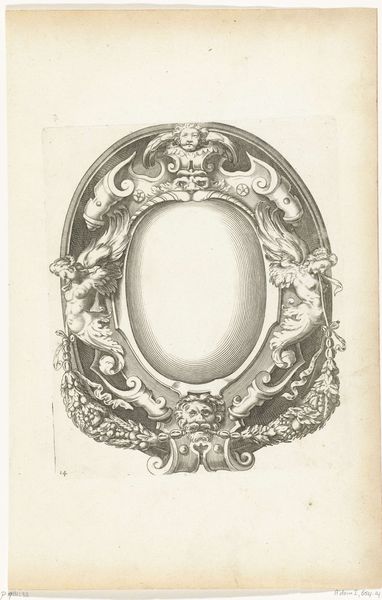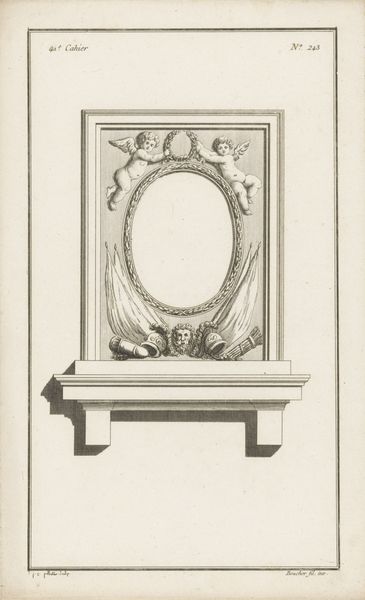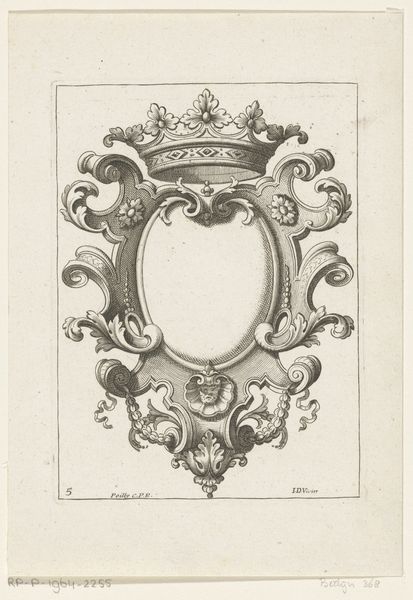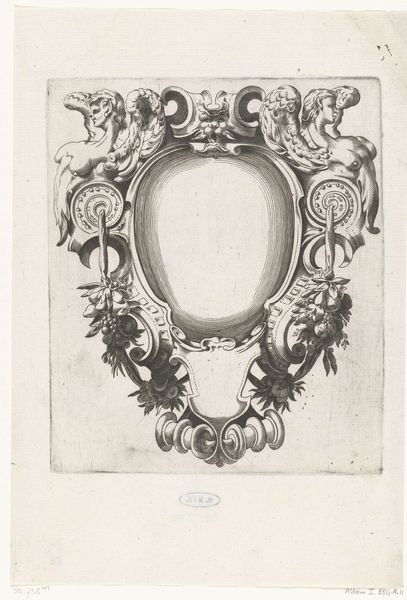
drawing, pen, engraving
#
drawing
#
baroque
#
pen sketch
#
pencil sketch
#
old engraving style
#
form
#
line
#
pen work
#
pen
#
engraving
Dimensions: height 242 mm, width 172 mm
Copyright: Rijks Museum: Open Domain
Editor: This is "Cartouche met rechtopstaand ovaal compartiment" a pen and engraving artwork by Lodovico Mattioli from around 1670-1680. I am struck by its intricate linework and the sense of formality, almost as if it's a frame waiting for a portrait of nobility. What does this cartouche evoke for you? Curator: This work, like many Baroque cartouches, reveals the complex relationship between art and power in 17th-century Europe. These weren’t merely decorative elements; they were potent symbols of authority, often framing portraits of rulers or adorning public monuments. The very act of commissioning and displaying such elaborate designs reinforced social hierarchies and legitimized political dominance. Have you considered where something like this might have been displayed? Editor: I imagine it on a grand building or as part of a noble family's crest, definitely something very public facing! So it’s less about the artwork itself and more about what it *represents* to the public. Curator: Precisely. Think about the skill required to create such a detailed engraving. The artist, Mattioli, is not simply showcasing his talent but also contributing to the construction of a visual language that communicated power and prestige to the masses. Consider the political implications of controlling this visual language – who gets represented, and how? Editor: So, the "canvas," the artistic skill and also the display, are all elements that reinforced that power to society and to the individuals. That's much deeper than just "decoration"! Curator: Exactly. And remember, museums and galleries themselves play a role in shaping our understanding of these historical dynamics. How we choose to display and interpret works like this today also carries its own set of political implications. Editor: It’s fascinating to consider how the artwork functioned then versus how we interpret it now. Curator: Indeed. Reflecting on this interplay deepens our understanding of art's enduring relationship with power.
Comments
No comments
Be the first to comment and join the conversation on the ultimate creative platform.
